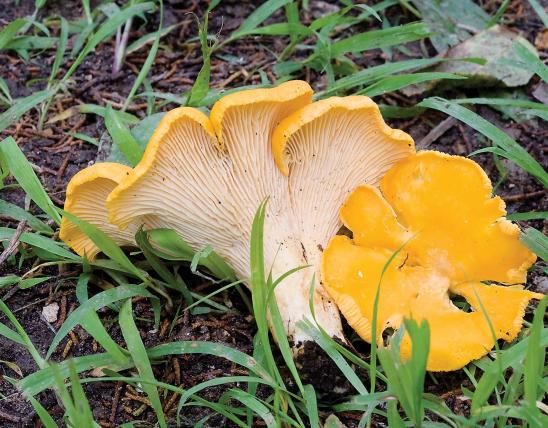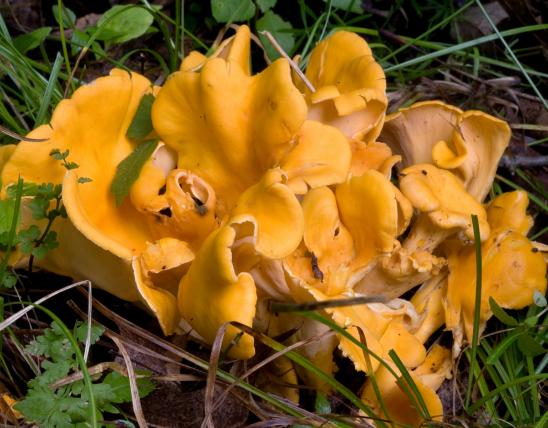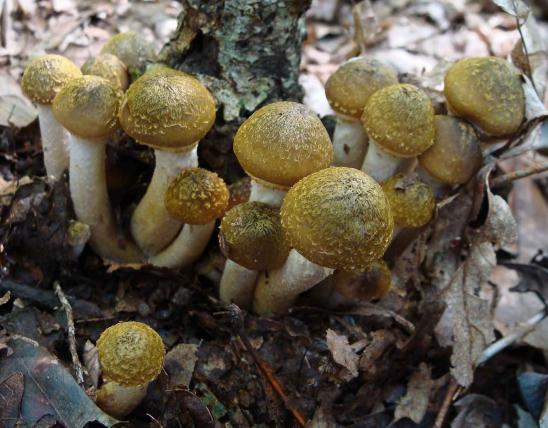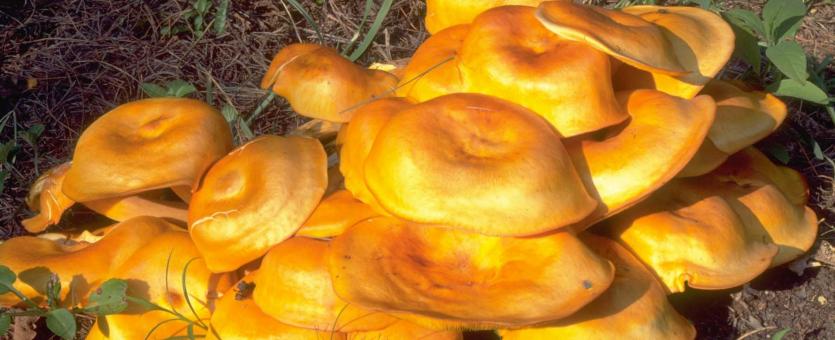
Bright orange to yellowish orange, with sharp-edged gills descending the stalk. July–October. Grows in clusters from wood or buried wood. Cap convex, becoming flat to funnel shaped, sunken in the center, with incurved margins; orange to yellowish orange; texture smooth. Gills narrow; sharp-edged; crowded; nonbranching; orange to yellowish orange. Gills descend the stalk. Stalk curved, tapering toward the base; same color as cap but darkening toward the base; texture smooth; solid. Spore print: cream. Spores magnified are round, smooth, colorless.
Lookalikes: Two delicious chanterelles (Cantharellus lateritius; C. cibarius) are similar in color and shape, but their undersides are smooth or have blunt ridges, not gills, and they grow singly on the forest floor (not in clusters on wood). The honey mushroom (Armillaria mellea) and ringless honey mushroom (Desarmillaria caespitosa) are honey-colored. The big laughing gym (Gymnopilus junonius) has orange to rusty spores.
Cap width: 2–8 inches; stalk length: 2–8 inches; stalk width: ½–¾ inch.
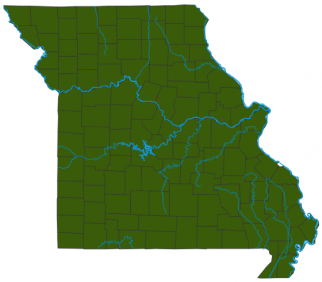
Statewide.
Habitat and Conservation
These mushrooms are found in summer and fall, in large clusters at the base of trees, on stumps, or on buried wood. Jack-o’-lantern mushrooms have caused many poisonings because they’re attractive and often abundant. They cause mild to severe stomach upset but are not life-threatening — to healthy adults. They’re also said to be bioluminescent — the gills of fresh specimens may sometimes give off a faint greenish glow at night or in a darkened room.
Status
Poisonous. Eating the jack-o’-lantern will make you very sick for a few days. You won’t die, but you might wish you had.
Life Cycle
This species exists most of the time as a network of fungal cells (mycelium) within rotting logs, branches, or tree roots. When ready to reproduce, the mycelium develops the above-ground cluster of mushrooms, which are reproductive structures. Spores are produced in the gills and are released to begin new mycelia elsewhere. The mycelium of a mushroom can live for decades.
Human Connections
This mushroom is commonly confused with the edible chanterelle. By learning to distinguish between the two, people learn about mushroom anatomy and end up appreciating our diverse natural heritage even more. This species has been explored for possible anticancer chemicals.
Ecosystem Connections
Fungi are vitally important for a healthy ecosystem. This fungus feeds on dead hardwood trees such as oaks, decomposing their fallen logs and branches and buried roots. This cleans the forest and helps nutrients to cycle back into the soil.
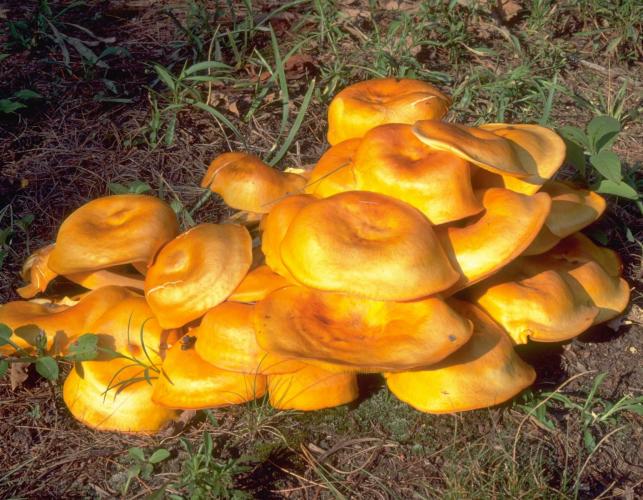
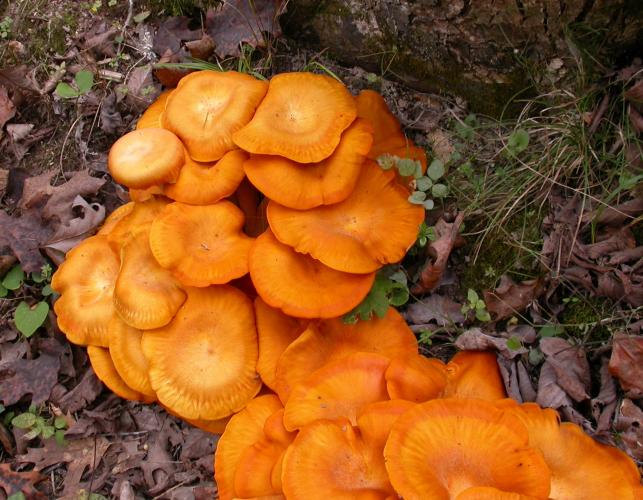



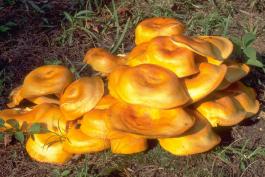
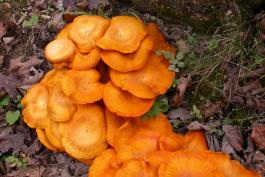
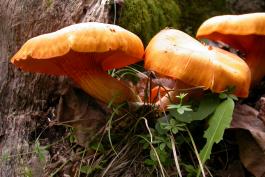
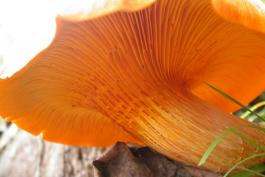
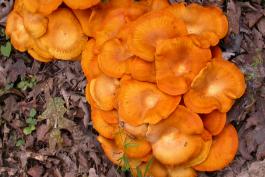
Mushrooms are a lot like plants, but they lack chlorophyll and have to take nutrients from other materials. Mushrooms are neither plants nor animals. They are in a different kingdom — the fungi. Fungi include the familiar mushroom-forming species, plus the yeasts, molds, smuts, and rusts.
Always be cautious when eating edible mushrooms. Be absolutely sure of the ID, and only eat a small amount the first time you try it to avoid a reaction..























